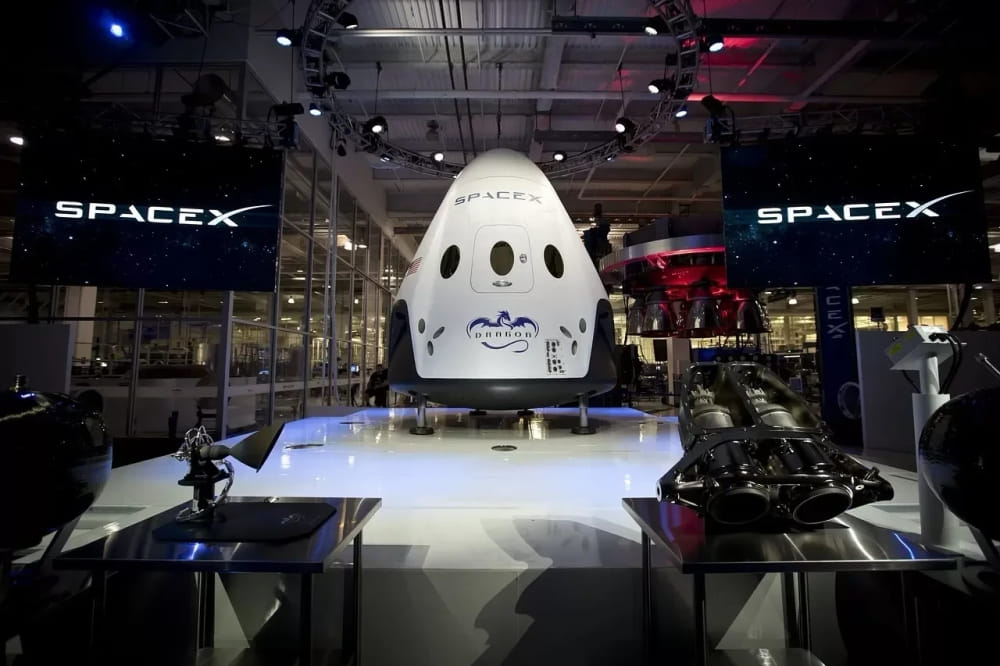Publicado em
- 4 min read
Pushing the Boundaries of Space Travel with SpaceX's Starship

Elon Musk’s SpaceX continues to push the boundaries of space travel, with its Starship rocket marking a pivotal step in this journey. This article examines Starship’s development, achievements, and the challenges it faces, focusing on its role in lunar missions and the broader goal of Mars colonization.
The Vision Behind SpaceX’s Starship
» Unprecedented Innovation with the Starship Rocket
The Starship rocket represents SpaceX’s most significant leap in space technology. Standing at an impressive 120 meters, it consists of the Super Heavy booster and the Starship spacecraft. This innovative design combines both components into a single, integrated launch system, capable of carrying a large payload to a variety of destinations in space.
» Starship: The Largest and Most Powerful Rocket Ever Built
Starship is designed to be the largest and most powerful rocket ever constructed. It surpasses previous models in size and capability, with the potential to transform the landscape of space travel. The rocket’s power and scale enable it to transport substantial cargo and passengers, making ambitious missions like lunar landings and Mars colonization feasible.
Milestones and Hurdles in Starship’s Development
» Crucial Data from Starship’s Initial Full Configuration Test
On April 20, SpaceX conducted the first full configuration test of Starship, providing crucial data despite some engine failures. This test marked a significant milestone in understanding the rocket’s performance and highlighted areas for improvement. Each test, whether fully successful or not, offers valuable insights that drive the development process forward.
» Insights from the Second Test’s Explosive Outcome
A subsequent launch saw successful stage separation but ended in explosions. Despite this dramatic conclusion, SpaceX hailed the test as a considerable advancement. The ability to achieve stage separation was a critical success, demonstrating progress and refining the engineering and safety protocols required for future missions.
FAA’s Investigation and Future Implications
» Understanding the FAA’s Classification and Investigations
The U.S. Federal Aviation Administration (FAA) classified the incident as an “incident,” focusing on the absence of injuries or major property damage. Ongoing investigations aim to determine corrective measures necessary for future launches. The FAA’s role is crucial in ensuring that SpaceX adheres to safety and regulatory standards, paving the way for subsequent missions.
Starship’s Role in Future Space Missions
» Preparing Starship for NASA’s Artemis 3 Mission
NASA plans to use a modified version of Starship for lunar missions, including the ambitious Artemis 3 mission, scheduled for 2025. This mission aims to land astronauts on the Moon for the first time since 1972, utilizing Starship’s advanced capabilities to achieve this historic milestone.
» Elon Musk’s Vision for Mars Colonization
Elon Musk envisions Starship as pivotal in establishing a human presence on Mars. With its full reusability, Starship is central to transporting materials needed for a lunar base and a Martian city. This vision includes regular flights to Mars, making the concept of a multi-planetary existence a tangible reality.
Starship in Comparison with Other Spacecraft
» How Starship Outshines NASA’s SLS and Saturn V
In terms of size and reusability, Starship outstrips NASA’s Space Launch System (SLS) and the historic Saturn V. Its groundbreaking design focuses on full reusability, enhancing cost-effectiveness and the frequency of space travel. This feature not only reduces the cost per launch but also accelerates the pace of space exploration.
Addressing Environmental and Regulatory Concerns
» The Environmental Debate Surrounding Starship Launches
The Starship project has sparked environmental debates, particularly regarding the impact of launches. One notable incident involved a fire in a nearby park, raising concerns about the environmental footprint of frequent launches. Addressing these concerns is essential to balance the benefits of space exploration with environmental stewardship.
» Navigating Complex Regulatory and Environmental Assessments
SpaceX navigates through complex regulatory and environmental assessments, with the FAA’s approval being crucial for future launches. These assessments ensure that SpaceX’s activities align with regulatory standards and environmental policies, mitigating risks and promoting sustainable practices in space exploration.
Starship’s Role in Redefining Space Exploration
Despite facing setbacks, SpaceX’s Starship represents a daring stride towards reimagining space travel. Each test and launch brings us closer to a future where space exploration is more accessible, and the dream of a multi-planetary existence is within reach. Starship’s development reflects the innovative spirit that drives human progress, pushing the boundaries of what is possible in space.
The Future of Space Exploration with SpaceX’s Starship
SpaceX’s Starship stands as a testament to the remarkable advancements in space technology and exploration. By continually overcoming challenges and achieving new milestones, Starship paves the way for a future where humans can explore and inhabit other celestial bodies. The vision of lunar missions and Mars colonization is no longer a distant dream but a tangible goal, thanks to the relentless efforts and innovative approach of SpaceX.